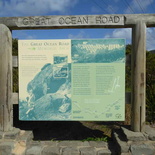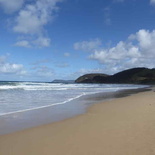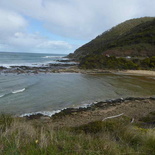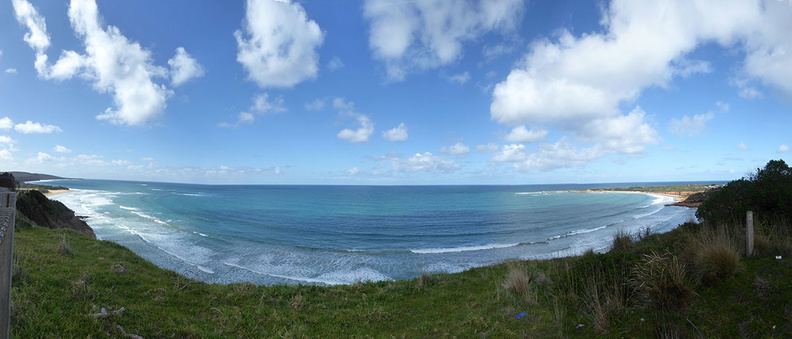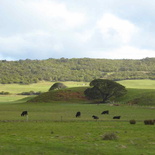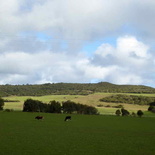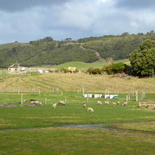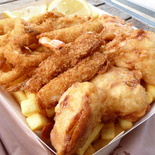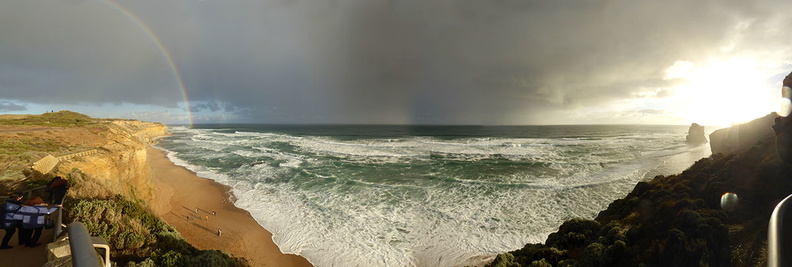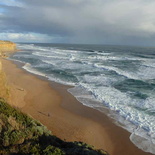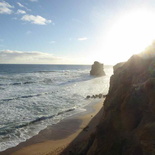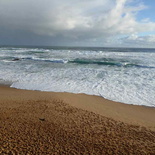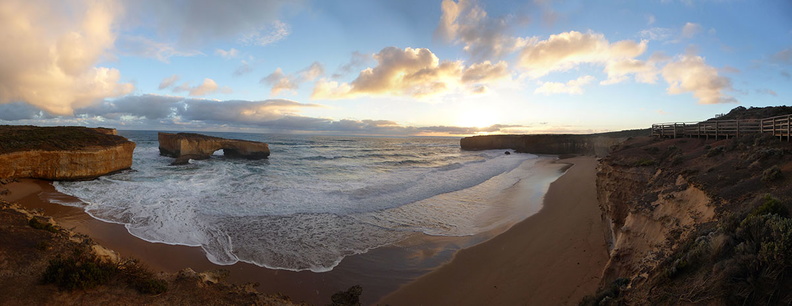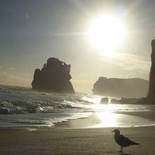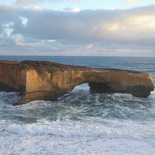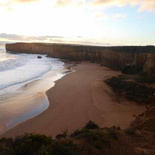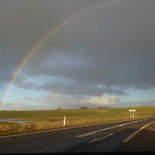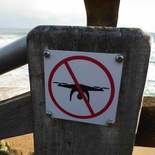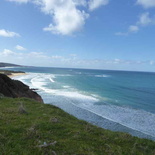The Great Ocean Road is a scenic highway which runs along the southern coast of the Australian continent in Victoria, Australia. The road used to be a major highway (B100) until a newer inland A1 highway replaces it. Today, the road serves as a popular tourist attraction in the region. People flock to the area for its spectacular scenic views and ocean sights by the pacific.
Moreover, the road stretches from Torquay, Anglesea and ends at Allansford after the town of Warrnambool. It is about 230 km in length which can be easily covered within a day in good weather.
You can only enjoy it by driving (or be driven). It is littered with a variety of natural coastal features such as open cliff sides, grottos and coastal erosion features. You may recognize, even by name several prominent landmarks along the route, including the Twelve Apostles limestone stack formations and the London Arch/Bridge which I shall cover.
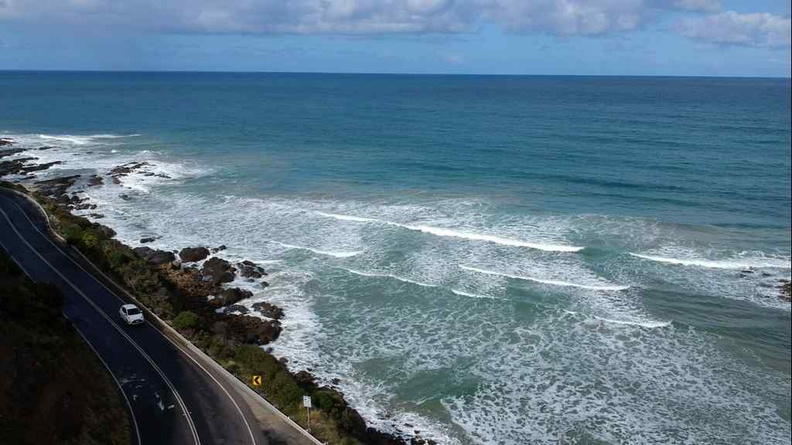
The route I took is a west bound route from Melbourne city, which you can make a day trip from. Join me on my adventures along the road of Australian National Heritage.
A road built by WW1 soldiers
Upon reaching Torquay, the Great Ocean Road starts with the “Great Ocean Road Archway”. It signifies the start of the historical road. Here you can find a memorial structure, as well as a few informative boards telling you about the history of the road. The marker marks the start of the route. It is also lined with a couple of sandy beaches.
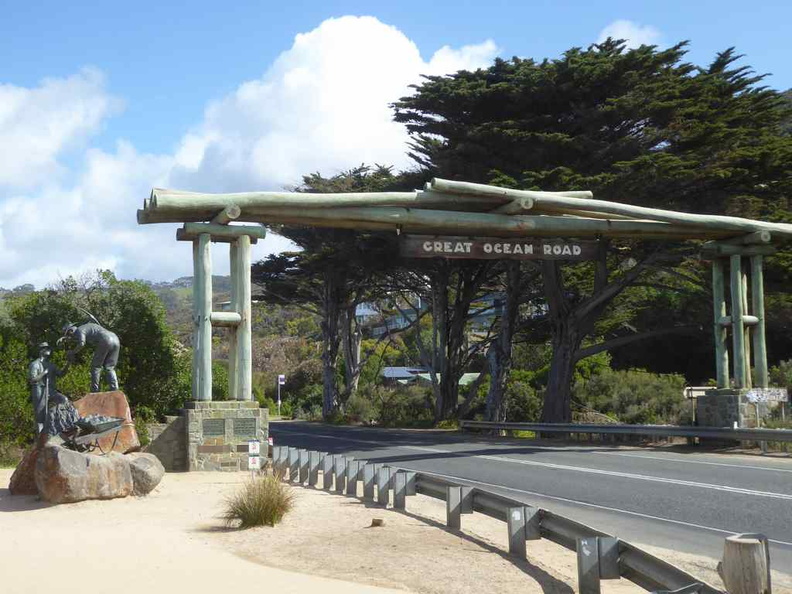
On a little history, the Great Ocean Road opened in 1932. The idea of a long coastal road was first planned towards the end of the First World War to improve on existing road conditions. Before that, the rugged south-west coast of Victoria was accessible only by sea or rough bush track.
Also, then chairman of the Country Roads Board, Mr William Calder wanted to provide jobs for returning soldiers. The work scope involves construction work, which Mr Calder managed to obtain funds from the State War Council to work on the building of new roads.
From there, with funds, the road was subsequently built by the returning soldiers between 1919 and 1932. When opened it is dedicated to soldiers killed during World War I.
The world’s largest war memorial
Henceforth, the Great Ocean road has the reputation as the world’s largest war memorial. Moreover, given its fantastic oceanic sights, he saw great value of the road serving the people, it was even originally named a “Tourist Road”.
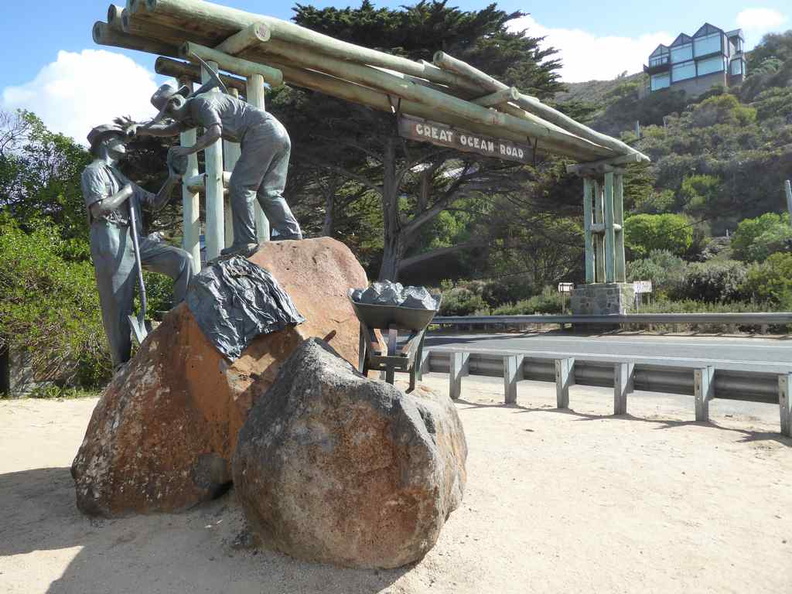
Today, the Great Ocean Road serves more of a tourist route as well as an access point for the high-end beach residences in the town. The road traverses rainforests, as well as access way for beaches. Most road traffic these days bypass the coastal road via major highways running more further inland.
Great driving roads
The Great Ocean Road passes through a number of hilly passes, hugging the coastline affectionately. This part which runs along the ocean is also known as the Surf Coast. You often see the waves crashing by the sandy beaches which line the side of this great ocean road.
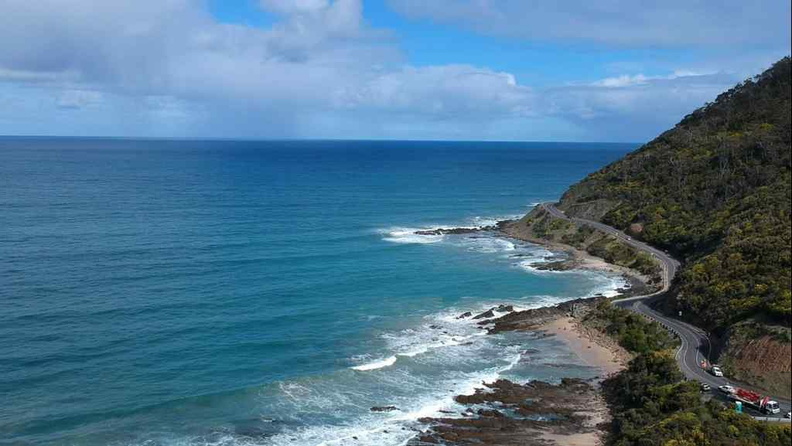
You will spend a great deal of time traveling through these roads between attractions. On the ocean sights, often you always be greeted with views of a clean undisturbed horizon separating the sea from the sky. The view does of the ocean never gets old.
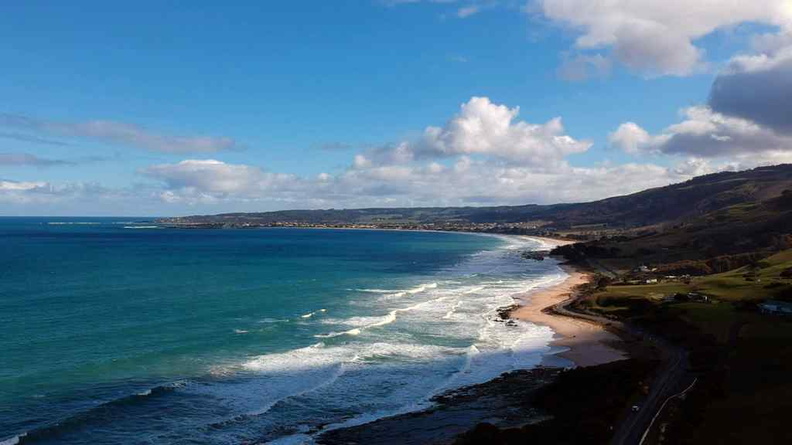
Furthermore, the roads regularly hug the terrain sometimes heading out into a flat clearing where nice sandy beaches. Often, you get a rocky hill face on one side and fantastic view of ocean on the other.
With a mix of inclines and declines along the route, the roads are most it is reminiscent of the nice winding coastal roads in Hawaii too. They snake and meander along the ocean lines, where the sea meets the continent. For the starting part of the journey you will pass through a hilly winding road.
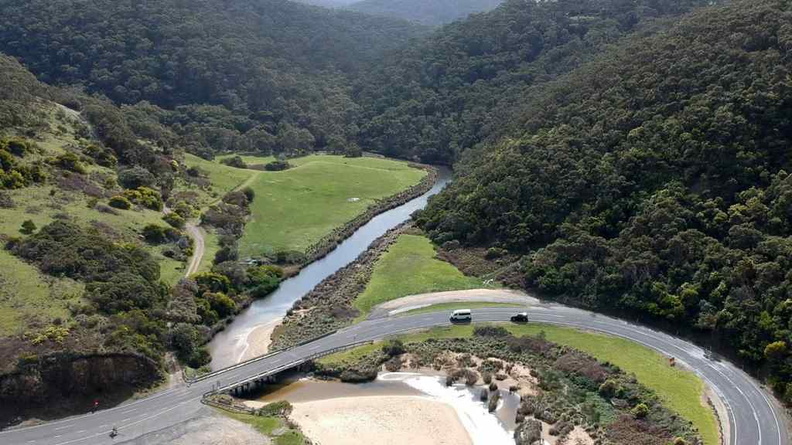
At times only a guardrail separates you from the road to the sea. Traffic is often fairly light as most of the working and freight traffic redirected through the newer northern A1 highway.
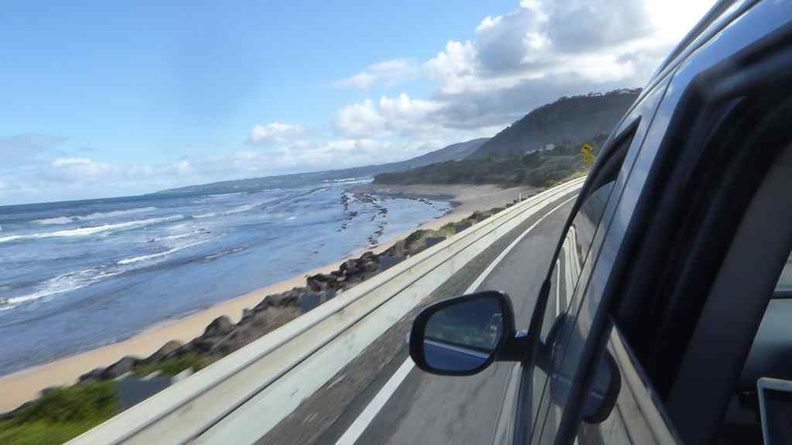
Remember to stop along the route!
Moreover, this Surf Coast sits on the part the road between Torquay and Cape Otway. It provides clear unobstructed views of the Bass Strait and the Southern Ocean. Additionally, there are regular scenic stop points littered along the road.
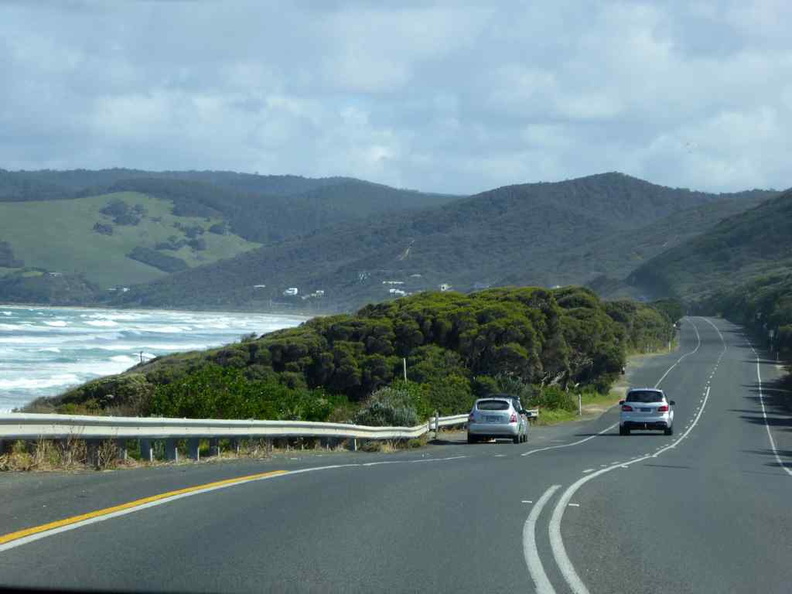
They are just an open clearing by the side of the road which you can pull up to allow faster vehicles to overtake. Just simply pull they are usually large enough with space for 3 cars length.
View of the typical ocean view along the Great Ocean road
Also, the roads are mainly two lane dual carriageway and is covered by a speed limit between 50 – 100 kmph. The speed limits are interestingly capped at 100 kmph even on windy twisty roads. Drive within your capacity, and there will be no takers of the Darwin award here!
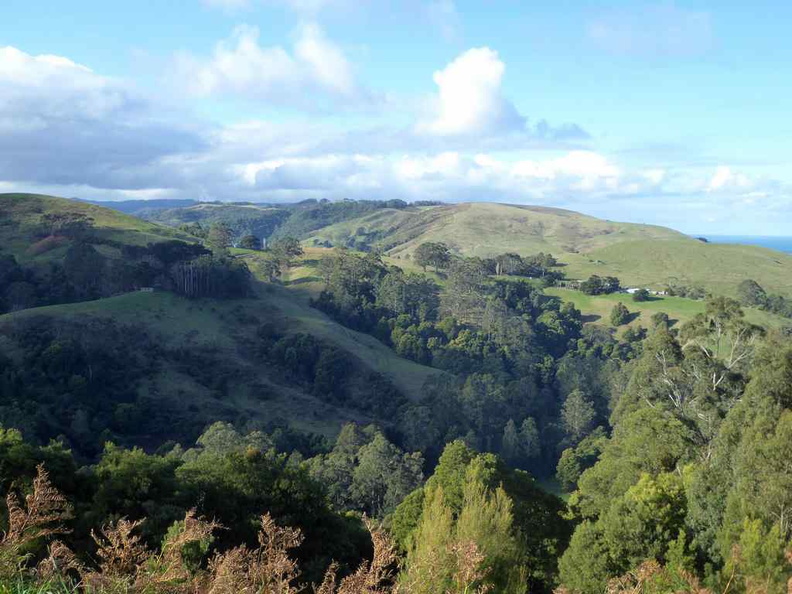
Driving on, on the middle part of your journey, towards Beechforest, the road suddenly brings you into an inland wooded forested area. You encounter a couple of tight curves and twisty bends through the forest before leading out into open farm plains.
Here, you can find large plains full of livestock here. Just be careful of the random sheep crossing the road. Surprisingly, the speed limit is cap here even at the bends are at a blistering 100kmph.
Coastal towns
With excellent ocean views, no wonder the ocean road is a popular spot for beach side holiday homes. These can cost and set you back in the excess of even 2 million for a property on a hill overlooking the ocean.
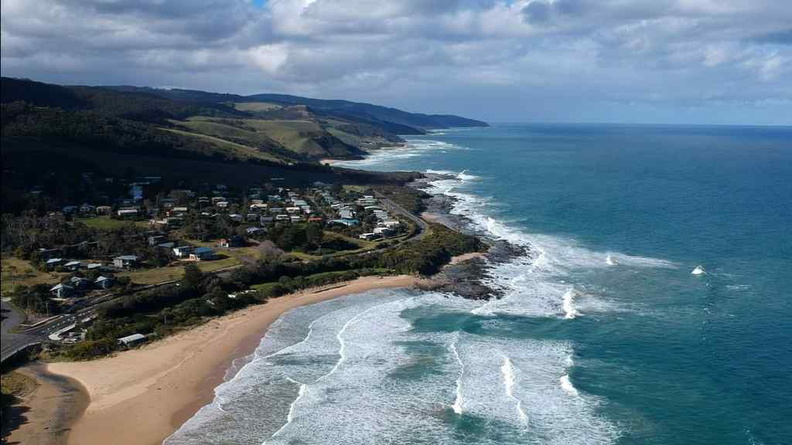
On a nice sunny day a couple of towns along the route. One such town is Apollo Bay. In this small beach-side town, you can find a couple of provision stores, as well as a restaurant selling fantastic fish and chips. A recommendation will be their large seafood platter to share.
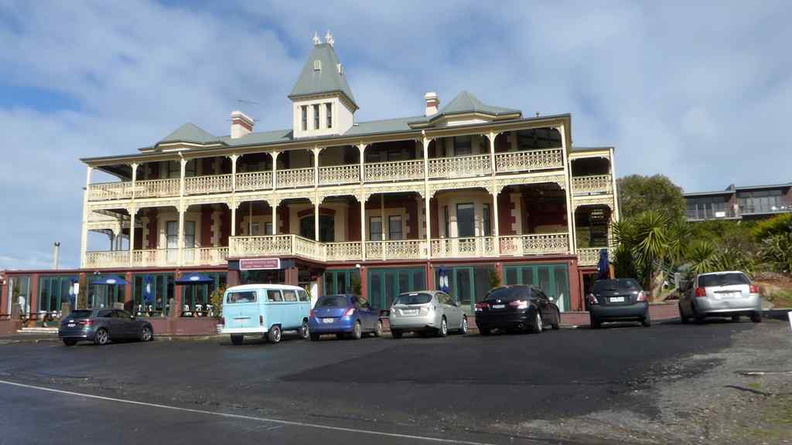
You can dine by the beach side as you hear the waves from the pacific regularly crashing into the bay beaches. Also you can find Wild Cockatoos in these town, swoppping around and chilling in the open fields by the beach side villages.
Plenty of natural sights
The highlight of the Great Ocean road besides the coastal views are a number of natural coastal sights. One main natural feature is the Twelve Apostles.
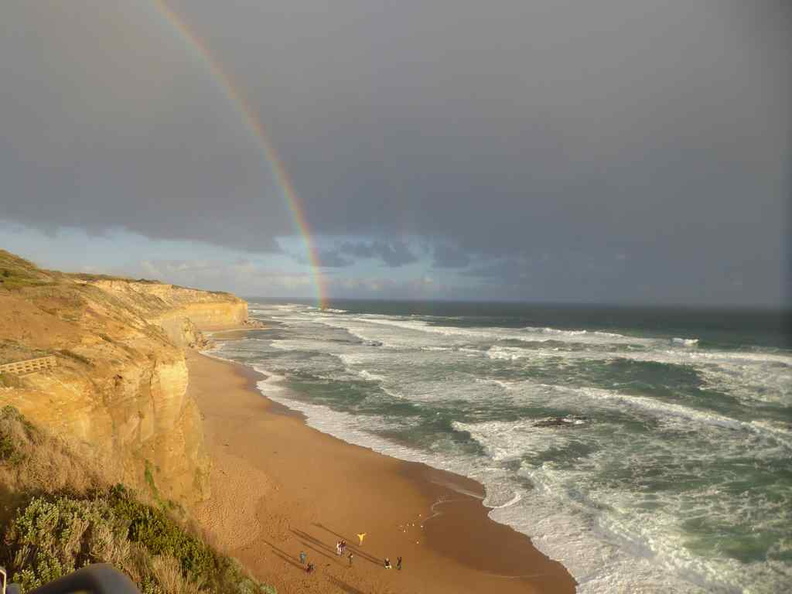
Located at the Twelve Apostles Marine national park, this area is know for a number of rock formations which the place is named after. There is the castle rock out in the sea. Access to the viewing areas are free.
Wide Panorama of the Twelve Apostles with a rainbow in distance
Additionally, you can catch the views from the top of the cliff side or take a short 5 minute walk down via a staircase to the shoreline.
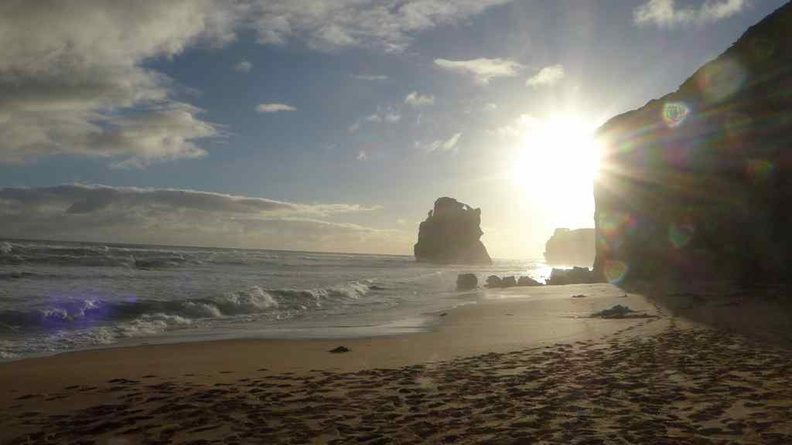
Beach access has limited opening hours and closes last sunset, also given the lack of lighting in the area.
Panorama of the beach shoreline at the Twelve Apostles
Moreover, during my visiting, there was a beautiful rainbow rising over the sea. Also, it offered beautiful photo opportunities during my visit. There are even helicopter services which you can charter for better overhead views.
Driving past Port Campbell national park brings you to a couple of erosion coastal features. Here, you have the Arch, the grotto and the London bridge.
Erosion structures and islets
I found the view of the London Bridge, one of the best breathtaking views of the entire journey. You get a majestic view of a brilliant rock formation with a hole right through it.
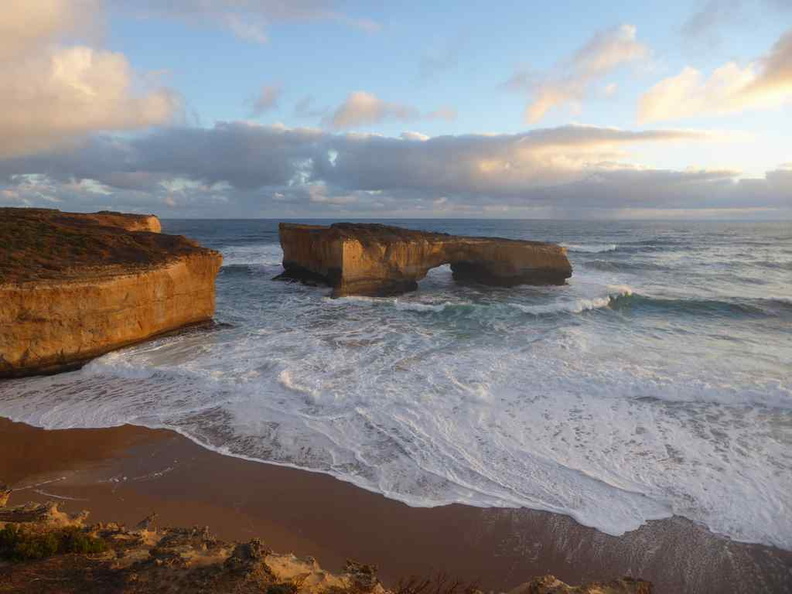
The natural limestone and sandstone rock formations are shaped by the relentless waves coming in from the Pacific. The force of the ocean trashing below you as the winds constantly blow and whistles past your ears.
Panorama of London bridge archway from the top vantage point
Moreover, it is worth noting that both the archway and London Bridge structures are of course, erosion structures. Hence, it is only a matter of time before they are completely destroyed by the force of the ocean.
Furthermore, the last main sight along the west bound road will be the Bay of Islands. This vast lagoon area is a bay filled with an assortment of surviving islet of islands. Also, it has a sense of tranquility especially near sunset with a view and draped by the orange of the setting sun.
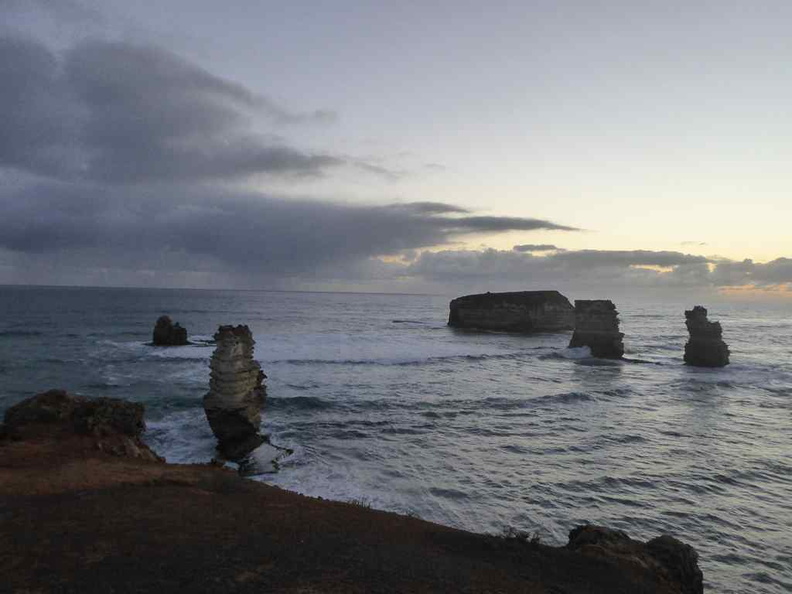
Moreover, besides picturesque views from top lookout areas overlooking the ocean shoreline, the pale colour of the limestone on the cliffs & rock stacks in the bay reflects different variations of light. It provides picturesque shots in darker conditions with good contrast.
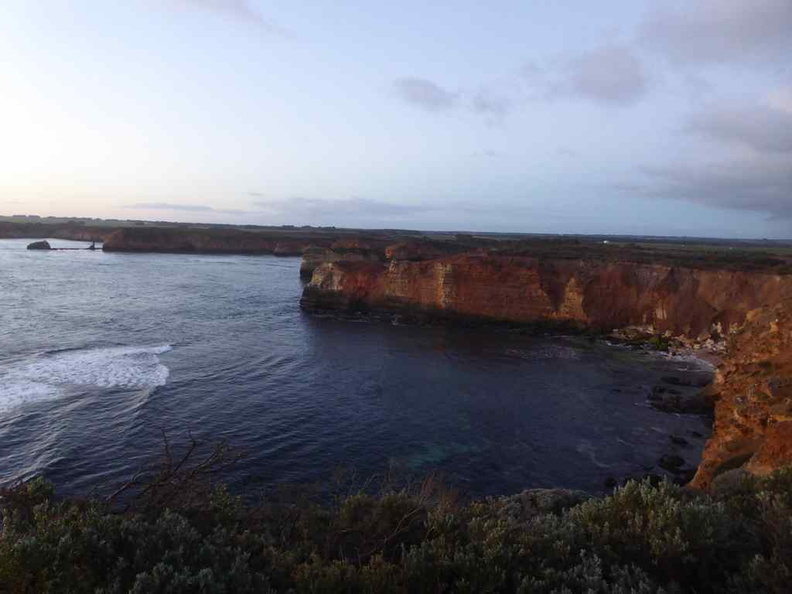
If you don’t use map to find the attractions, a tell tale sign of such a scenic spot is usually the sudden occurrence of a large parking area and signs by the national parks board. Here, you can following the trails leads you the shoreline where the signs behold.
Moreover, if you are flying drones. Do note that that despite most part of the ocean road being fly-zones. Areas of attractions are labeled as no-fly by the parks services. This also applies if you are in private property within the National Parks boundaries.
Good for a driving day trip
Furthermore, it is advisable to drive along the Great Ocean road to experience the great driving roads and the sights at your own pace. Renting a car is an option. If you wish to do the road and enjoy the Greta driving roads. Alternatively, there are day tours offered by tour agencies which can take you on it too by private bus.
Also, a drive along the Great Ocean road and stopping at attractions will take you and entire day (about 6 hours). You can make a day trip there from Major Australian cities, such as Melbourne. When you reach one end of the road B100, you can easily make your way up the highway by nightfall for your quick 2 hour return trip (about 200km) to where you started.
All in all, the great ocean road is one of the great natural sights southern Australia has to offer. If you are in the Victoria area or just passing by the City of Melbourne, it is a trip worth considering. The natural beauty throughout the route, the sea breezes, chill towns, good food and clean views of an undisturbed horizon separating the sea from the sky everywhere. It is a joy.

